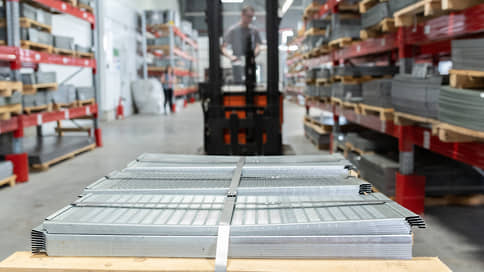The share of Russian metals in the warehouses of the London Stock Exchange decreased by 5 percentage points in July
[ad_1]

Stocks of Russian metal in the warehouses of the LME increased against the backdrop of outpacing growth in storage of metals from other countries. Thus, stocks of Chinese and Chilean copper rose sharply in July. The basis of reserves is Russian aluminum, the volume of which increased by 4%. According to analysts, traders can accumulate stocks as a tool to offset inflationary risks.
The share of Russian metals in the warehouses of the London Metal Exchange (LME) in July decreased by 5 percentage points, to 50.5%, follows from the published report of the exchange.
Inventories of Russian metal increased by 4% to 258.9 thousand tons, but at the same time the total reserves increased by 13.6% to 512.3 thousand tons.
At the same time, the volume of stocks is still lower than a year ago, when 700-800 thousand tons of metal were stored in warehouses.
The main part of Russian stocks is aluminum, the volume of which as of July 31 was 227 thousand tons. In a month, its stocks rose by 4%. Volumes of Russian nickel decreased by 11.7% to 7 thousand tons. Copper reserves increased by 6.2% to 24 thousand tons. The total reserves of this metal more than doubled to 73.7 thousand tons. This happened due to the placement of 27.3 thousand tons of Chilean copper (in June – 1.3 thousand tons) and 15 thousand tons of Chinese copper, which was not in warehouses in June.
Although stocks of metals on the stock exchange are not at high values, competitors of Russian companies in the world market are trying to benefit from their growth. Norwegian producer Norsk Hydro approached the stock exchange in July with a proposal to reconsider its decision not to ban the storage of Russian aluminum in warehouses, as large volumes of the metal threaten the benchmark status of its aluminum contract. The LME refused, noting that Russian metals continue to be consumed by many market segments. Last year, the LME already held consultations on a ban on the supply of aluminum, copper and nickel from Russia to its warehouses. Then such a decision was promoted by Alcoa, which insisted on the exclusion of Russian aluminum from the listing of the exchange, but to no avail.
The hypothetical ban on Russian metal on the stock exchange will not directly affect Russian companies, since large metallurgical companies, as a rule, sell their products under long-term contracts directly to end consumers, and the surplus to traders.
Russian metal enters the warehouses of stock exchanges mainly in the course of secondary transactions. Independent industrial expert Maxim Shaposhnikov believes that some traders are waiting for the rise in metal prices due to increased inflation and therefore buy it in stock. In addition, the expert says, stockpiles are an indirect way to trade in the sanctions metal, since it becomes more difficult to trace the origin of products. In August, UGMK, Russia’s largest copper producer, fell under US sanctions.
Commenting on the rise in copper inventories, Boris Krasnozhenov from Alfa-Bank notes that demand for it remains strong. According to Chinese customs, the country increased copper imports in July by 3.2% to 1.96 million tons, which correlates with the dynamics of Chinese industrial production. LME copper inventories fell at the end of June to the lowest level since 2021. A few years ago, copper reserves at the LME fluctuated around 200-300 thousand tons, and at the beginning of the last decade they exceeded 600 thousand tons.
World copper consumption was about 25 million tons in 2022. Thus, notes Boris Krasnozhenov, LME reserves account for only a small share of the market. LME copper demand orders (cancelled warrants) at the end of June were at the level of 50-60% of the stock volume, which confirms the strong demand for copper. Given the small number of large projects, there are expectations of a copper deficit in the market in the medium term, the analyst said.
[ad_2]
Source link





